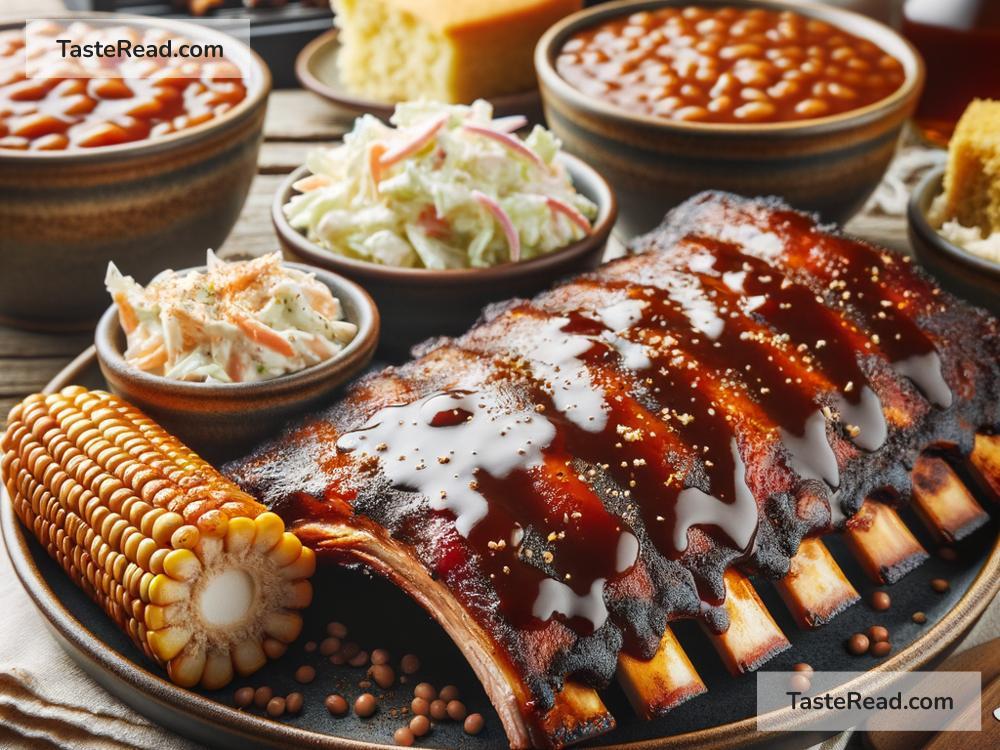The Evolution of American BBQ Ribs
When you hear the word “BBQ,” you probably think of smoky meats, tangy sauces, and good times spent outdoors with family and friends. One of the stars of American barbecue culture is the iconic rack of ribs. BBQ ribs have become a symbol of hearty food, community, and tradition in the United States. But how did they become so popular? Let’s explore the history and evolution of BBQ ribs to find out!
What are BBQ Ribs?
BBQ ribs are racks of meat taken from a pig or cow, cooked slowly and seasoned to perfection. Pork ribs are the more common choice, but beef ribs are also loved by many. They come in different cuts, like baby back ribs (small and tender) or spare ribs (larger and meatier).
Making ribs delicious requires patience. They are usually smoked low and slow over wood, allowing the flavors to seep in while the meat gets tender enough to fall off the bone. After cooking, the ribs can be brushed with BBQ sauce or dry rub seasoning for extra flavor. The result? A mouthwatering feast that people all over the U.S. (and beyond) can’t get enough of.
Where It All Began: The Roots of BBQ
To understand the story of BBQ ribs, we have to go back centuries. Barbecue as a cooking style began with indigenous tribes in the Caribbean, who used wooden racks called “barbacoa” to smoke meat over an open fire. European explorers and settlers brought this technique to the southern parts of the United States, where it combined with African-American cooking traditions to create what we now recognize as American BBQ.
Cooking meat low and slow was not just a way to make food taste delicious; it was also a practical choice. Tough cuts of meat, like ribs, would soften over hours of smoking or roasting, turning something cheap and chewy into tender perfection.
BBQ Goes Regional
As BBQ spread across the U.S., it evolved into unique regional styles, each with its own flavors and techniques. These regions played a big role in the development of ribs as a barbecue favorite.
-
Memphis Style
Memphis, Tennessee, is known for its pork ribs. Here, ribs are either basted with a tangy tomato-based sauce or rubbed with a blend of spices known as “dry rub.” The focus is on smoky, tender meat that doesn’t need much added flavor, letting the natural taste shine. -
Kansas City Style
Kansas City BBQ is famous for its sweet, thick sauce that is slathered onto ribs after they’re cooked. Kansas City ribs are often slow-smoked and charred, giving them that sticky, caramelized texture we all love. -
Texas Style
Texas barbecue revolves around beef rather than pork, so many Texans enjoy beef ribs over pork baby back. These ribs are seasoned simply with salt and pepper, smoked over wood, and served without sauce. Texas barbecue highlights the smoky, natural beef flavor. -
Carolina Style
The Carolinas are known for vinegar-based sauces that add a tangy kick to their ribs. Pork is the dominant meat here, and ribs are often served alongside pulled pork and other Southern classics.
The Rise of BBQ Ribs: Cooking Meets Culture
Ribs became more popular in the 20th century, as backyard grills and BBQ joints popped up across America. Barbecue restaurants opened in droves, serving ribs as their signature dish. Because ribs are so fun to share and eat with your fingers, they became a favorite at social gatherings, holidays, and summer parties.
Television also helped spread BBQ ribs culture. Cooking shows and competitions showcased ribs as the ultimate test of a pitmaster’s skill. Recipes and techniques were passed down from generation to generation, mixing old traditions with new ideas. Today, BBQ ribs are not just food—they’re a legacy.
Modern BBQ Ribs: Endless Possibilities
Today, barbecue ribs offer endless possibilities. You can find creative flavors and techniques, from using exotic spices to experimenting with different woods for smoking. Some chefs even use new cooking methods, such as sous vide, to make exceptionally tender ribs.
And of course, sauce flavors keep evolving. In addition to classics like Kansas City-style sauce, you’ll find new varieties like honey mustard, chipotle, or even fruit-infused sauces. Side dishes have also grown, with BBQ ribs paired alongside mac-and-cheese, cornbread, coleslaw, and baked beans.
We’ve also seen BBQ ribs become more inclusive. While pork and beef dominate BBQ traditions, new recipes feature turkey, lamb, and even plant-based ribs made from jackfruit or mushroom textures.
The Global Appeal of BBQ Ribs
Though BBQ ribs are uniquely American, their appeal is universal. People across the world have embraced this smoky delight, adding their own cultural touches. In Korea, ribs can be marinated in a soy-based glaze before grilling. In Latin America, ribs might be spiced with chili and lime. Every culture has its own way of celebrating ribs.
Conclusion: A Delicious Cultural Icon
BBQ ribs are more than just food. They bring people together, whether it’s at a backyard cookout, a state fair, or a barbecue championship. They embody history, culture, and creativity, showing how simple ingredients can turn into something truly magical.
So, the next time you bite into a rack of smoky ribs, think about the journey they’ve been on—from the Caribbean barbacoa to Memphis dry rubs to international cuisines, BBQ ribs represent an evolving tradition of flavor and connection.
Let’s keep enjoying—and evolving—this delicious American classic!


